Recently I went on a spontaneous, overnight road trip to the Japanese Stroll Garden in Springfield, MO, to see a waterfall. While there, I visited the Dr. Bill Roston Native Butterfly House, which is part of the botanical center, and where you can see native butterflies lay eggs, caterpillars feeding, chrysalises in camouflage, and butterflies.
The house is not very big, but is light and airy, and the butterflies and the moths fly freely around you as you enter. It’s a delightful and curious place, much like Alice’s Wonderland or the fairy Tinker Bell’s Pixie Hollow, where hundreds of fairies live, and the golden, glitter-like pixie dust flows from the Pixie Dust tree.

Butterflies are special creatures. To me, they are a symbol of what happens to us as believers: a transformation into a completely new person saved by faith in Christ, much like the caterpillar transforms into the beautiful butterfly.
In fact, a yellow butterfly, drawn by our anointed artist daughter Leah, was the logo/symbol for my Released women’s conference several years ago.
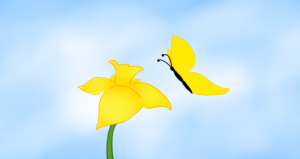
Also, one of my books has a butterfly on its cover, Metamorphosis: From Fear to Faith.
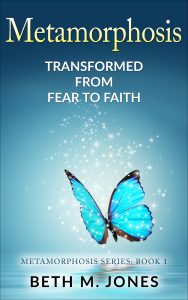
I had never seen butterflies up so close before as I did at the Butterfly House. Dr. Bill Roston and his assistants are very knowledgeable about butterflies and moths, and are happy to answer your questions. They showed me numerous chrysalis, the pupal stage of butterfly development where the mysterious and miraculous transformation takes place.
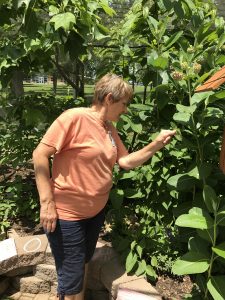
Dr. Roston’s assistant corrected me that butterflies do not have cocoons, but chrysalis, which are the hardened body of a butterfly pupa. Moths have cocoons, an external structure constructed by larvae to protect themselves during the pupal stage. Here are some of the butterflies’ chrysalis below.
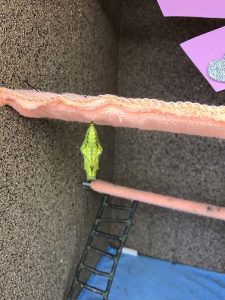
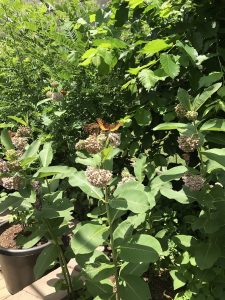
Dr. Bill showed me how a butterfly had landed on his finger, and explained it was using its long, straw-like tongue to eat the salt from his skin. He invited me over and then gently moved the butterfly to my finger. I’ve never had this happen to me before, and was so happy! I wish I’d gotten a picture, but I didn’t want the butterfly to fly away!
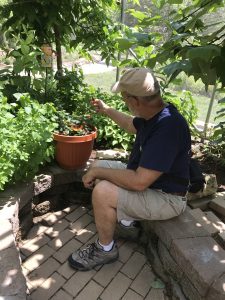
He told me how a butterfly has a very short life span, and usually lives only about a month, depending on the species, the size, and what time of year it became an adult. The smallest butterflies you see feasting on flowers in your yard only live about one week! Mourning Cloaks, some tropical Heliconians, and Monarchs are some of the only butterflies that have an average life span of about nine months.
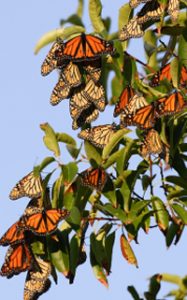
Image source: https://www.thebutterflysite.com/butterfly-migration.shtml
Monarch and other butterflies migrate south and west, because they are cold-blooded and can’t handle the cold winters so they have to fly somewhere warmer. They need to stay where their food source is; if there’s winter and there’s no flowers, they don’t survive. Some have been discovered to migrate 3,000 miles each fall from Canada to Mexico and vice versa. (But it’s a one-way trip for the butterfly!)
The center had a cute caterpillar-butterfly playground; it looked so cute and fun for kids to play on, and I wish I had our kids and our grandkids with me!
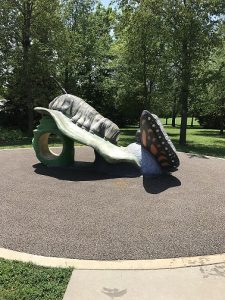
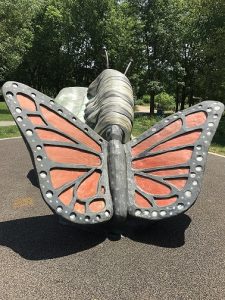
Right after the Butterfly House, there are lily gardens, the varied colors like precious jewels. I thought our daughter Leah would enjoy this, as she likes lilies.
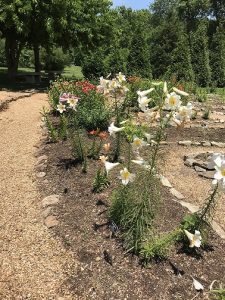
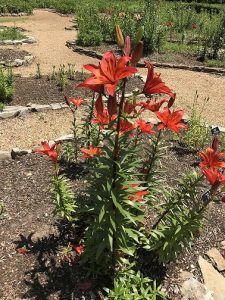
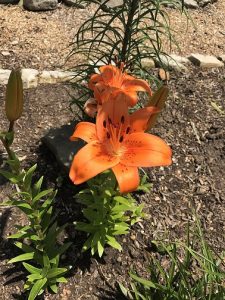
There is a peaceful lake at the center. I was thankful for a clear, sunny day, driving there and back.
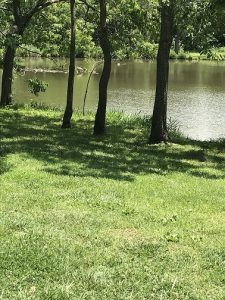
After the lake is the waterfall. It is man-made, but still beautiful. It is so peaceful there, and I stayed awhile, thanking God for this highlight of my trip.
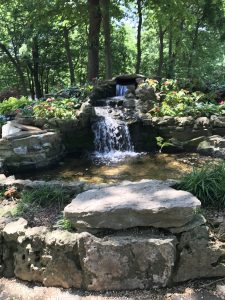
Next was a pretty rose trellis, which reminded me of one of our family’s favorite movies, The Secret Garden.
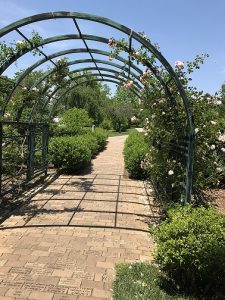
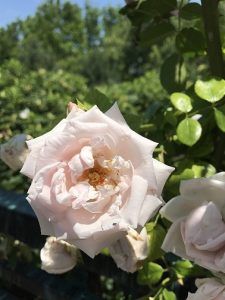
I’ll continue blogging about my trip this week. I hope you’ve enjoyed the pics. It was SO fun, and I can’t wait to go back there soon, this time taking my husband Ray with me. (He was in Texas visiting his mom when I went on this trip.)
Where do you want to go this summer? What do you want to do? Leave your comments below.
Leave a Reply